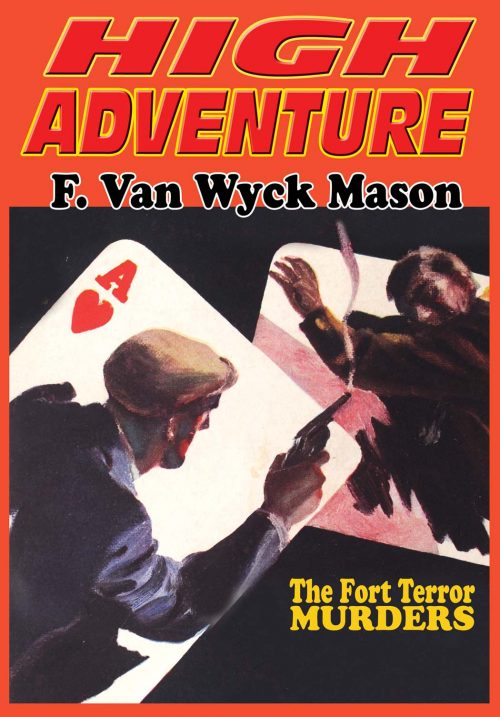Magazine Review: High Adventure #169: The Fort Terror Murders edited by John P. Gunnison
The main feature in this pulp reprint originally appeared in Complete Detective Novel Magazine in December 1931, but the text comes from its reprint in Mystery Novels Magazine Quarterly in Summer 1932. Both magazines had relatively short runs, so it is relatively seldom seen.

“The Fort Terror Murders” by F. Van Wyck Mason takes place in the Philippines. Captain Hugh North of Army Intelligence was hoping to spend a quiet day or three playing polo at Fort Espanto in southern Luzon. But he finds himself instead entangled in the local officers’ romantic and political intrigues as the dinner party he’s at is interrupted for a treasure hunt.
It seems that the site of “Fort Terror” was originally a Jesuit monastery. The military governor of the time seized the building to build a military fort around, evicting the monks without their rumored to be impressive treasury. No such stash was found during the renovations, but the presence of such a treasure was given strength by the discovery that the monks had crafted two unusual rosaries and left behind a scrap of parchment with the words “Pater Noster” on it. Every person who’s announced that they were close to finding the treasure has either died shortly thereafter or mysteriously disappeared.
The current American base is built next to the old fort, which is considered unsafe due to centuries of deterioration. Cryptography expert Lieutenant Bowen has been collaborating with his fiancee Inez Sarolla’s cousin Ricardo Mendez, whose family held the rosaries. They are fairly certain they have discovered the secret, and will uncover it this very night!
Most of the group waits in utter darkness at the old fort’s one known accessible entrance while the treasure hunters enter. After a long wait with only silence from the depths of the fort, a horrible cry is heard! When the place is searched, Ricardo Mendez is found dead, a knife between his ribs, and Bowen has vanished!
Only Captain North’s keen detective skills can unravel this gruesome mystery.
This is one of those stories where figuring out the treasure puzzle is just as important as discovering the identity of the murderer and how they committed the crime. Thus cryptography, a working knowledge of ecclesiastical Latin, and astronomy trivia all play a part.
One of the points hammered home is that at this point in history, U.S. Army officers were poorly paid. Luxuries like polo playing are for those that came from well-off families, married into wealth, or are skimping heavily in another area of their life. (It’s implied Captain North is in the first group.) Thus there’s a certain amount of classism in the officers’ mess, and almost all the officers could desperately use an infusion of Spanish gold. There are, however, other possible motives that can’t entirely be ruled out.
Content note: Period ethnic prejudice plays a part in the story, primarily against people of Spanish descent. One officer lists the ethnicities of people he doesn’t consider “white” with a series of ethnic slurs, and no one seems bothered by this. Outright racism isn’t an overt factor, but it’s notable that no one even considers giving the Jesuit treasure back to the Filipino natives they logically would have extracted it from. (We might class that under colonialism instead.) Marital (and possibly sexual) infidelity is a subplot point.
The mystery itself is pretty clever, with a couple of clues discovered only after it’s solved, so Captain North had to proceed on pattern recognition.
“Double-Cross Coffin” by James E. Smith fills out the issue with a reprint of a short from Ten Detective Aces September 1937. Retired police detective Dan Craig is in town for the funeral of “Snapper” Martin, notorious gang leader. His suspicions are somewhat confirmed when the corpse looks too dead (standard funeral parlor procedure being to make the stiff look like they’re just sleeping) but the grief of Snapper’s mother seems genuine.
Turns out Snapper is the sort of fellow who would break his own mother’s heart to pull off the biggest heist in history. Dan is the only one who’s figured it out, but is captured, his only hope being a well-timed radio program.
It’s a fun if somewhat implausible story.
Overall, this issue is a good choice if you are willing to put up with period ethnic prejudice.

